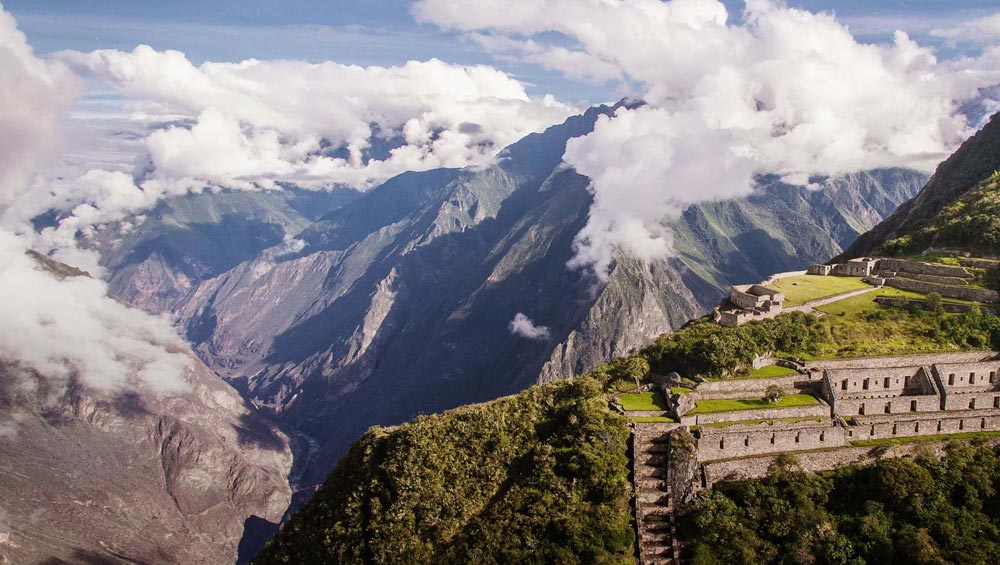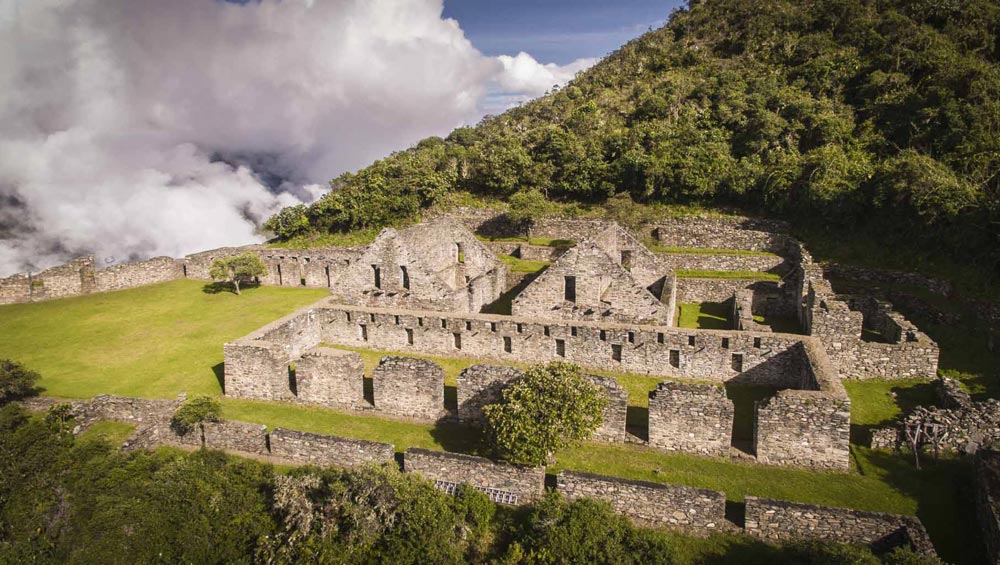Choquequirao, often referred to as the “sister city of Machu Picchu,” is one of Peru’s most spectacular and least-visited archaeological sites. Hidden deep in the Vilcabamba mountain range, this ancient Inca city offers breathtaking landscapes, rich history, and an unparalleled trekking experience. Unlike Machu Picchu, Choquequirao remains largely untouched by mass tourism, making it a perfect destination for adventurous travelers seeking an authentic Andean journey.
History and Significance of Choquequirao
Choquequirao, meaning “Cradle of Gold” in Quechua, was an important administrative and religious center of the Inca Empire. It is believed to have been constructed during the reign of Pachacuti and expanded under his successors. This city served as a refuge for the Incas resisting Spanish conquest, similar to Vilcabamba, the last stronghold of the Incas. Covering over 1,800 hectares, only about 40% of Choquequirao has been excavated, leaving much of its mystery yet to be uncovered.
The site features impressive terraces, ceremonial plazas, temples, and a series of intricate stone structures that reflect advanced Incan engineering. The most iconic part of Choquequirao is the series of llama-shaped stone terraces, which are unique to this site and highlight the Incan reverence for nature and their agricultural prowess.
How to Get to Choquequirao
Unlike Machu Picchu, which is accessible by train and bus, Choquequirao requires a challenging multi-day trek. The most common route starts from the small town of Cachora, located about 4-5 hours from Cusco by car. From Cachora, trekkers embark on a demanding 4-day round-trip hike covering approximately 64 kilometers (40 miles).
The trek involves steep descents into the Apurímac Canyon and strenuous ascents to the ruins, making it suitable for experienced hikers. However, the effort is rewarded with breathtaking views, diverse ecosystems, and the solitude of an ancient city untouched by crowds. Several tour operators in Cusco offer guided treks, which include mules, porters, and expert guides to enhance the experience.
Best Time to Visit Choquequirao
The best time to visit Choquequirao is during the dry season, from May to October, when trails are in the best condition and the weather is more predictable. The rainy season, from November to April, brings heavy downpours, making the trek more challenging and dangerous due to muddy paths and potential landslides.
What to Expect on the Choquequirao Trek
The trek to Choquequirao is not for the faint-hearted. It includes:
- Day 1: A long descent into the Apurímac Canyon, followed by an overnight stay at a campsite near the river.
- Day 2: A grueling ascent to Marampata, where trekkers get their first glimpse of the ruins, followed by a final stretch to the archaeological site.
- Day 3: Exploration of Choquequirao, with a full day to discover its terraces, temples, and breathtaking viewpoints.
- Day 4: The return trek, retracing steps back to Cachora.
Hikers should be prepared for high altitudes, extreme temperature changes, and rugged terrain. Bringing proper gear, including hiking poles, warm clothing, and plenty of water, is essential.
Future of Choquequirao: The Cable Car Project
To increase accessibility and tourism, the Peruvian government has proposed a cable car system that would connect the ruins with the surrounding valleys, reducing travel time from days to just a few hours. While this project could bring economic benefits and make Choquequirao more accessible, many travelers worry about its impact on the site’s untouched beauty and remote allure.
Why Visit Choquequirao?
For those seeking an off-the-beaten-path adventure, Choquequirao is a dream destination. It offers an opportunity to experience Incan history in a way that Machu Picchu no longer can due to its popularity. The combination of breathtaking landscapes, rich history, and challenging trekking conditions makes Choquequirao one of the most rewarding journeys in Peru.
Comparing Choquequirao and Machu Picchu
While both Choquequirao and Machu Picchu are incredible Inca cities, they offer vastly different experiences. Machu Picchu is more accessible, well-preserved, and iconic, drawing thousands of tourists daily. In contrast, Choquequirao is a more rugged and lesser-known site that requires effort and determination to reach. The reward, however, is an unparalleled sense of discovery and connection with the past, free from crowds and commercialization.

Essential Tips for Visiting Choquequirao
- Trek: The hike to Choquequirao is physically demanding, so prepare with endurance and strength training before your trip.
- Pack wisely: Bring sturdy hiking boots, layered clothing, a high-quality backpack, trekking poles, a rain jacket, and plenty of water.
- Hire a guide or join a tour: While independent trekking is possible, a guide can provide valuable insights and logistical support.
- Acclimatize in Cusco: Spend a few days in Cusco before the trek to adjust to the altitude and avoid altitude sickness.
- Respect the environment: Carry out all trash, stick to designated trails, and respect the archaeological remains.

